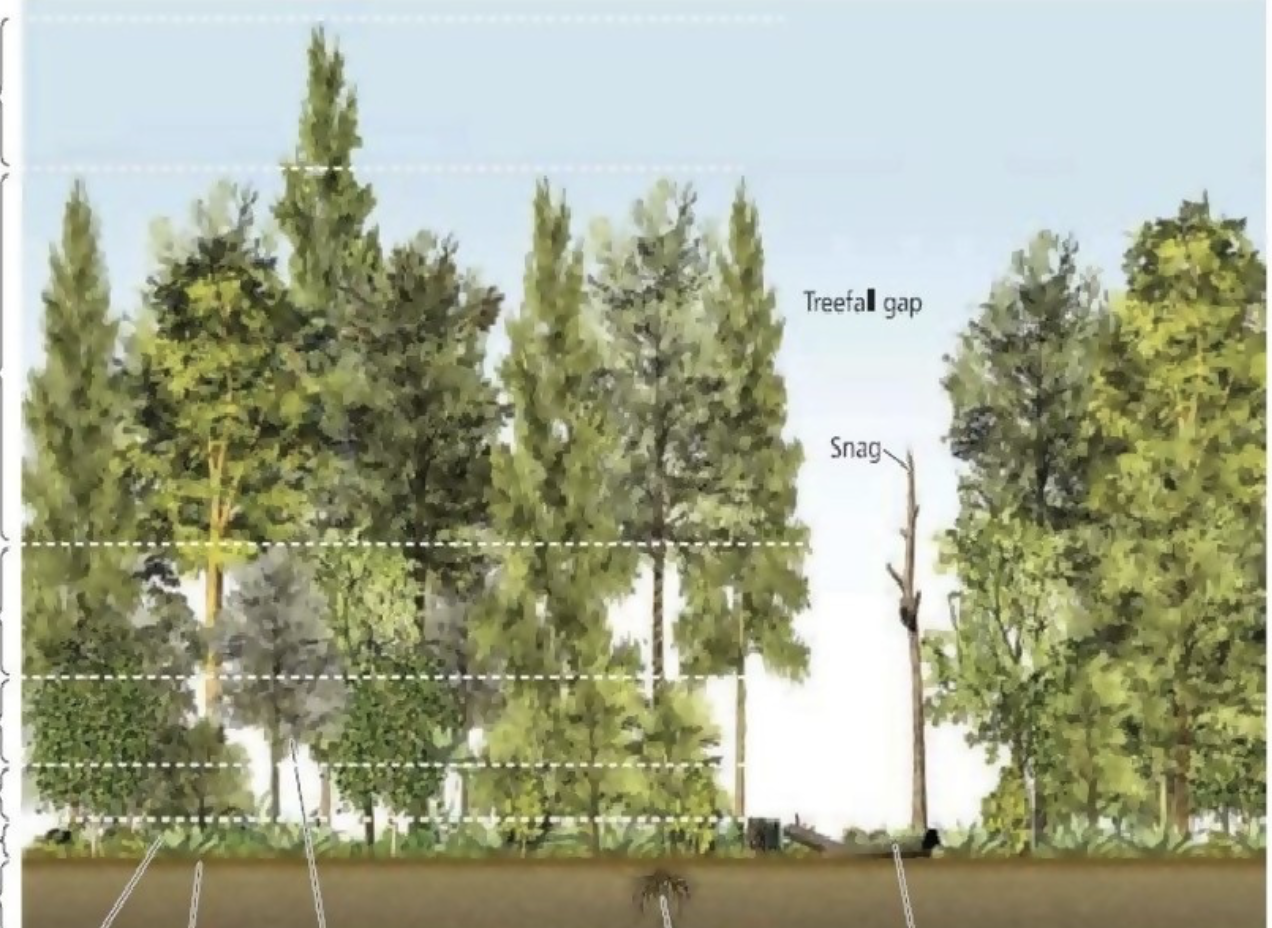Forestry exam
1/36
There's no tags or description
Looks like no tags are added yet.
Name | Mastery | Learn | Test | Matching | Spaced |
|---|
No study sessions yet.
37 Terms
A woody perennial that is at least 5” dbh and 15’ tall at maturity
Definition of a tree
An ecosystem dominated by trees
Definition of a forest
over harvesting, soil erosion, degrade water quality
Impact of resource exploitation
Measured at 4.5’
DBH
Primary growth lengthens roots and shoots from apical meristems, while secondary growth thickens stems and roots through vascular and cork cambium activity.
Primary vs Secondary growth
Trees grow by lengthening through primary growth at root and shoot tips and by thickening through secondary growth that forms wood and bark.
How trees grow
61%
New York forests total land area
Harvesting System | Felling System | Extraction System |
|---|
Conventional Logging | Chainsaw | Cable Skidder |
Mechanized Logging | Feller-Buncher (wheeled/tracked) | Grapple Skidder |
Cut-to-Length (CTL) | Processor (harvester head) | Forwarder (carries logs) |
Felling and extraction systems for different harvesting systems
Conventional Logging (Chainsaw + Cable Skidder)
Small-Scale Mechanized Logging
Cut-to-Length Systems (in some areas)
East Coast Harvesting Systems
Mechanized Logging (Feller-Buncher + Grapple Skidder)
Cable Logging (Skyline Systems for steep slopes)
Helicopter Logging (for remote or sensitive areas)
High-Production Clearcutting
West Coast Harvesting Systems
Fast-growing
Short-lived
Need lots of light (shade-intolerant)
Reproduce quickly (many small seeds)
Colonize disturbed areas
Examples: Aspen, Pin cherry
Pioneer Species
Species Composition
Age Distribution
Density and size class distribution
Forest Strata
4 components of describing forest structure
Even-Aged System
One age class
Trees are all about the same age
Caused by big disturbances (like clearcuts or fires)
Easier to manage and harvest
Multi-Aged System
More than one age class
Trees are different ages
Created by cuttings or natural processes
More natural and diverse
Even- vs multi-aged systems
Get the rotation age (how long trees take to mature)
Multiply it by 20%
Find the age difference between the oldest and youngest canopy trees
If the difference is less than 20% → Even-aged
If the difference is more than 20% → Multi-aged
How to determine age structure
Seeding- < 3 ft tall
Sapling- 3ft - 10ft tall and < 4” DBH
Pole Size- 4” - 12” DBH
Sawlog- > 12” DBH softwood, > 12” DBH hardwood pallet, > 14” DBH hardwood
Size classes
QSD or QMD
Overstory/ Structure
Understory
Shrub Layer
Herb layer
Forest Floor
Forest Strata layers

The art and science of controlling the establishment, growth, composition, health, and quality of forests and woodlands to meet the diverse needs and values of landowners and society on a sustainable basis.
Define: Silviculture
Forest Regeneration
Forest Tending
Harvesting and Stand Renewal
Three main parts of silviculture
High Grading
Diameter Limit cut
What is and is not silviculture
thinning
Sanitation
Salvage
timber stand improvement
Types of intermediate treatments
Thinning from below
thinning from above
Selection thinning
Geometric thinning
Free thinning
Types of thinning
1. Thinning from Below
Effect: Removes smaller, weaker trees.
Result:
Increased growth for larger, healthier trees.
Better light for remaining trees.
Improved forest structure (fewer competition issues).
2. Thinning from Above
Effect: Removes larger, older trees to allow smaller ones more space.
Result:
Increased growth for younger trees.
Promotes crown expansion for remaining trees.
Higher potential for regeneration of younger trees.
3. Selection Thinning
Effect: Selectively removes certain trees based on factors like size, health, or species.
Result:
Improved stand composition (targeting specific trees for removal).
Balanced growth of selected trees.
More diverse forest structure.
4. Geometric Thinning
Effect: Removes trees in a systematic pattern (e.g., rows or spacing).
Result:
More even spacing between trees.
Improved tree growth with less competition.
Simple, predictable forest layout.
5. Free Thinning (Crop Tree Release)
Effect: Focuses on removing trees around desired "crop" trees.
Result:
Maximized growth of selected crop trees.
Better crown development for desired trees.
Increased profitability if done commercially.
Results of different thinning methods on residual forest
1. Clearcutting
2. Seed-Tree Method
3. Shelterwood Method
3 even aged regeneration methods
Establishment Cut
Removal Cut
2 phases of a seed tree
Preparatory Cut
Establishment Cut
Removal Cut
3 phases of a shelterwood
An even-aged regeneration method where a few trees are left to provide seed, and then removed after seedlings are established.
SSeed-Tree
Owner Objectives
Stand Capabilities
Prescription Writing
Marking Guidelines
What goes into a prescription?
A course of action to change a forest stand
What does a prescription describe?
owner objective
Stand capabilities
Forester/Logger Skills
Market demands
Trails/Special areas
Considerations for harvesting
To create regeneration
Why is uneven-aged silviculture not practiced?
The q-ratio is the ratio of the number of trees in one diameter class to the number in the next larger diameter class.
What is a q-ratio?
Moderate growth rate
Intermediate lifespan
Some shade tolerance
Begin to appear as pioneers die off
Fill in gaps in the canopy
Mid-Successional Species
Slow-growing
Long-lived
Shade-tolerant
Reproduce less often, but with larger, fewer seeds
Dominate stable, mature forests
Examples: Sugar maple, Eastern hemlock
Climax Species
An even-aged regeneration method where trees are removed in phases, allowing new trees to grow under the partial shade of remaining trees
Shelterwood
A written plan that guides forest treatment based on the landowner’s goals, site conditions, and management needs.
Prescription
Concise instructions for the implementation of a prescription.
Marking Guide